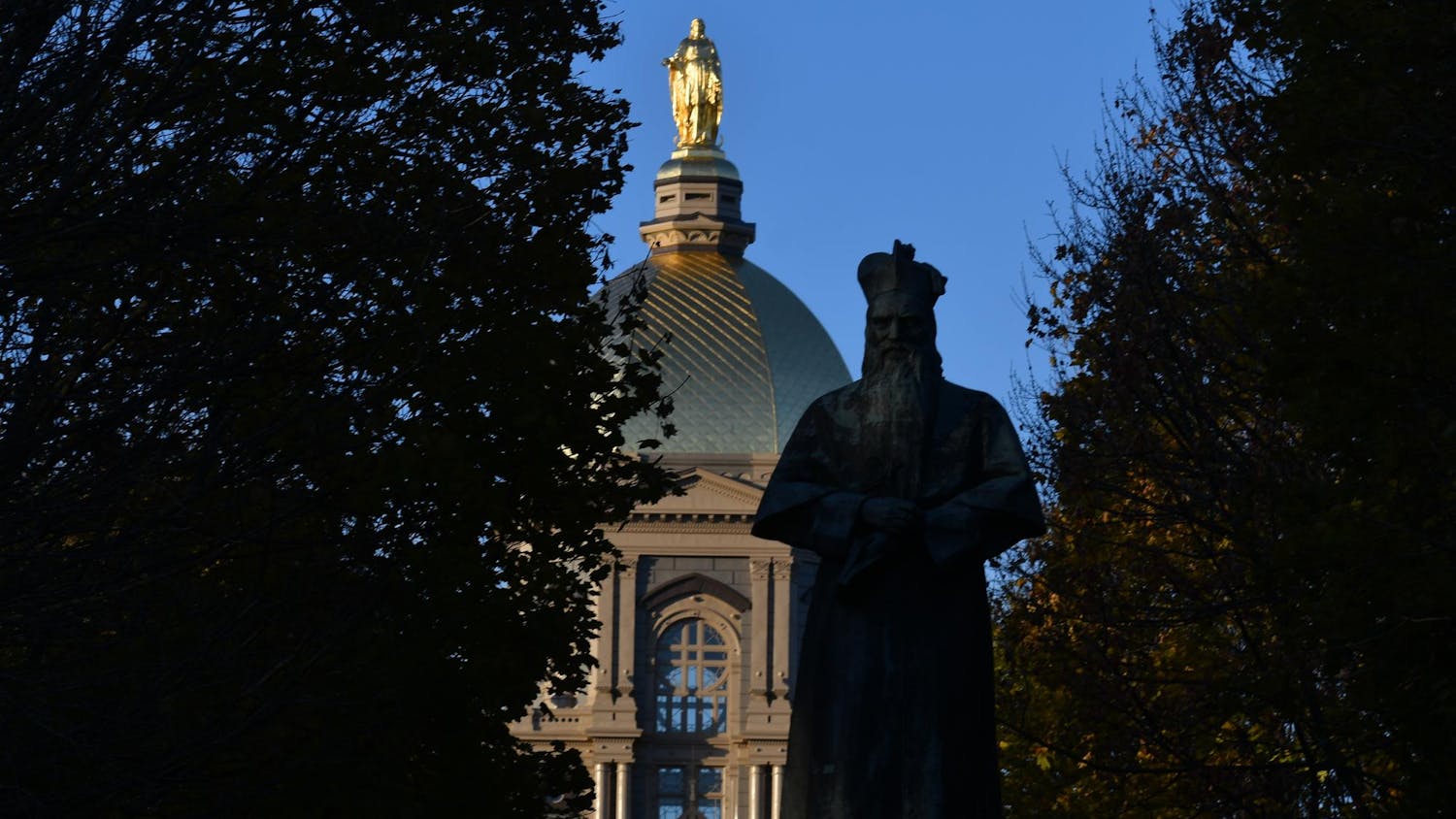As Notre Dame strives to expand its international profile and strengthen its Catholic identity, the University has recently found a way to do both simultaneously by hosting a different type of liturgy on campus
Beginning this fall, Byzantine Catholic Divine Liturgy is offered the first Sunday of every month at 10 a.m. at the chapel of Mary, Seat of Wisdom in Malloy Hall. The first liturgy was a great success, with a packed chapel filled with a congregation of roughly 50 Notre Dame students, faculty and staff, as well as members of the larger South Bend community, Fr. Khaled Anatolios said.
While “Roman Catholic” and “Catholic” are often treated as interchangeable terms, there are millions of Catholics worldwide who do not practice the Roman Rite, and are therefore technically not Roman Catholic. While traditionally found in the Middle-East, these “Eastern Catholic” churches have spread westwards, with the Byzantine Eastern Catholic Church now present on Notre Dame's campus.
“Having this liturgy gives people a chance to come together and form a community and practice according to the way that they're used to ... there are people on campus who have this Byzantine background and they've never had a place before where they could worship in the tradition they grew up in,” Anatolios said.
Interest in offering a Byzantine Catholic Divine Liturgy was first sparked when Anatolios, a priest of the Greek Catholic Melkite Church, came to Notre Dame.
“There used to be a small Melkite community in town, but then they didn't have a priest. When my bishop knew that I was coming here ... he [wanted] to have a Byzantine Catholic presence on the campus of the most prominent Catholic university in America,” Anatolios said.
This enthusiasm was quickly matched by figures on the campus, Anatolios said, as both he and the Byzantine Catholic liturgy were welcomed to campus with a profound hospitality.
“I met [University President Fr. John Jenkins], at a new faculty orientation and when he found out that I was a Byzantine Catholic priest he was very enthusiastic. ... He got me in touch with Fr. William Lies, who's the vice president for church affairs and then he put me in touch with Fr. Pete McCormick, who is the [director] of campus ministry ... and arranged for me to have this [liturgy]. I've had nothing but the greatest support from everybody on campus,” Anatolios said.
He said the Greek Catholic churches have their roots in the oldest Christian history when various different regions celebrated Christian ceremonies in their own fashions. Anatolios said these different rites had crystallized by the fourth century, establishing different “liturgical families” around major urban centers. While the prayers, the languages and the styles of the services may have been different, this didn't cause any problems or disruptions of Communion within the Church for many years, Anatolios said.
This unity in the Church was finally disrupted by the doctrinal disputes of the Council of Chalcedon in 454 and the growing distance between the Catholic and Eastern Orthodox Churches, Anatolios said, which climaxed in the Great Schism of 1054. While the Catholic and Eastern Orthodox Churches remain distinct, several bodies within the Eastern Orthodox Church reestablished communion with Rome over the centuries, Anatolios said.
“The Byzantine Catholic churches ... follow the Byzantine Rite that originated in Constantinople and reunited with Rome and reestablished communion with Rome,” Anatolios said, “It's easy to break communion, but its very hard to reestablish it once its broken. The Eastern Catholic churches came about because there was the recognition that there really aren’t serious doctrinal differences that should divide us.”
Anatolios said some differences between the Byzantine and Roman rites include differently worded prayers, a greater emphasis on icons, singing and bodily movement, and perhaps most surprising to those raised in the Roman Rite, married priests such as Anatolios himself. Because of the ritual similarities between the Byzantine Rite churches and the Orthodox churches, many feel the Eastern Catholic Churches can serve as a connection between Rome and other parts of the Christian world.
Anatolios said he grew up in Egypt and has connections with various members of the Coptic and Orthodox Christian communities.
“As a community that follows orthodox traditions, liturgical traditions, spiritual traditions ... we feel like a bridge between the Roman Catholic and Orthodox churches,” Anatolios said. He will also be on a panel at the American Academy of Religion regarding Eastern Orthodox theology.
Anatolios emphasized his gratitude toward the warm welcome he has received on campus and hoped this new service on campus would help Notre Dame further connect with the tremendous vitality and variety of the international Church.
“I think that's why Fr. Jenkins and Fr. Lies were so enthusiastic, because I think that they want [Notre Dame] to express the full diversity and all the richness of the Catholic tradition,” Anatolios said.









